Hot, hot, hot! This summer we decided to take a trip west and knew we would face some hot weather. Coming from the humid South, uncomfortable weather is just part of life. Humidity in the 80% range and temperatures climbing into the 90s is not unusual here, so when people warned us about the high temps we would encounter traveling west in summer, we were not at all discouraged.
That said, we did some homework to find out what we might be facing. Most of our journey would be at high elevation, and we learned that the humidity was negligible. That sounded great to us and, in several places on our itinerary, the temperature would also be lower than our typical Georgia summer – sign us up!
You know the saying, “it’s not the heat, it’s the humidity?” I can tell you firsthand that is a true statement. A 90-degree day with 75% humidity in Georgia is a lot more uncomfortable than a 90-degree day with 5% humidity in Montana. But either one is uncomfortable if you’re boondocking without air conditioning.
We didn’t plan a lot of boondocking stops, but we knew we would be doing some non-utility camping at Harvest Hosts so we decided to do a “cooling makeover” on our RV. Of course, we made sure the A/C was in good working order, but we also looked at why the RV would heat up in the first place and tried to resolve issues that would make the cabin feel hot.

An RV Has a Lot of Glass
There is a lot of glass on an RV. The windshield and cab windows let in lots of light, but also transfer a lot of heat into the unit. To mitigate that transfer, we outfitted the cab with interior and exterior thermal barriers. Foil-lined insulating panels held in place with velcro strips for the interior were a big help in blocking some of the heat. These panels are foil on either side, with a quilt of insulation between them. Lightweight to handle and easy to store, we simply roll them up and stow them in an outside compartment when not in use.
But, we discovered a big difference in heat transfer when we added an exterior cover to the windshield and cab windows. A treated vinyl drape that fastens with magnets to the top of the windshield and over the door jambs dropped the temperature impressively.
The thermal barriers and vinyl drape worked in combination to keep the sun off the glass and limit the transfer of heat into the unit. We also used our awning to keep the sun off the side of the RV when we’re in camp, or parked in the shade when possible.
Taking a cue from our living room’s south-facing window, we installed an insulated drape between the cab and the living area to not only limit any heat transfer, but also reduce the amount of space we needed to cool. Since our cab is curved at the roofline, typical drapery hardware didn’t fit quite right, so we found a couple of stylish coat hooks that could hold a heavy curtain rod and double as a place to hang our hats! A thick curtain rod and insulated grommet-topped drapes, hemmed to length, made an attractive and functional addition. A bonus, we discovered, is that the cab A/C unit works better when we keep the drape closed while driving. The cab air conditioner doesn’t have to cool the whole coach – just the cab.
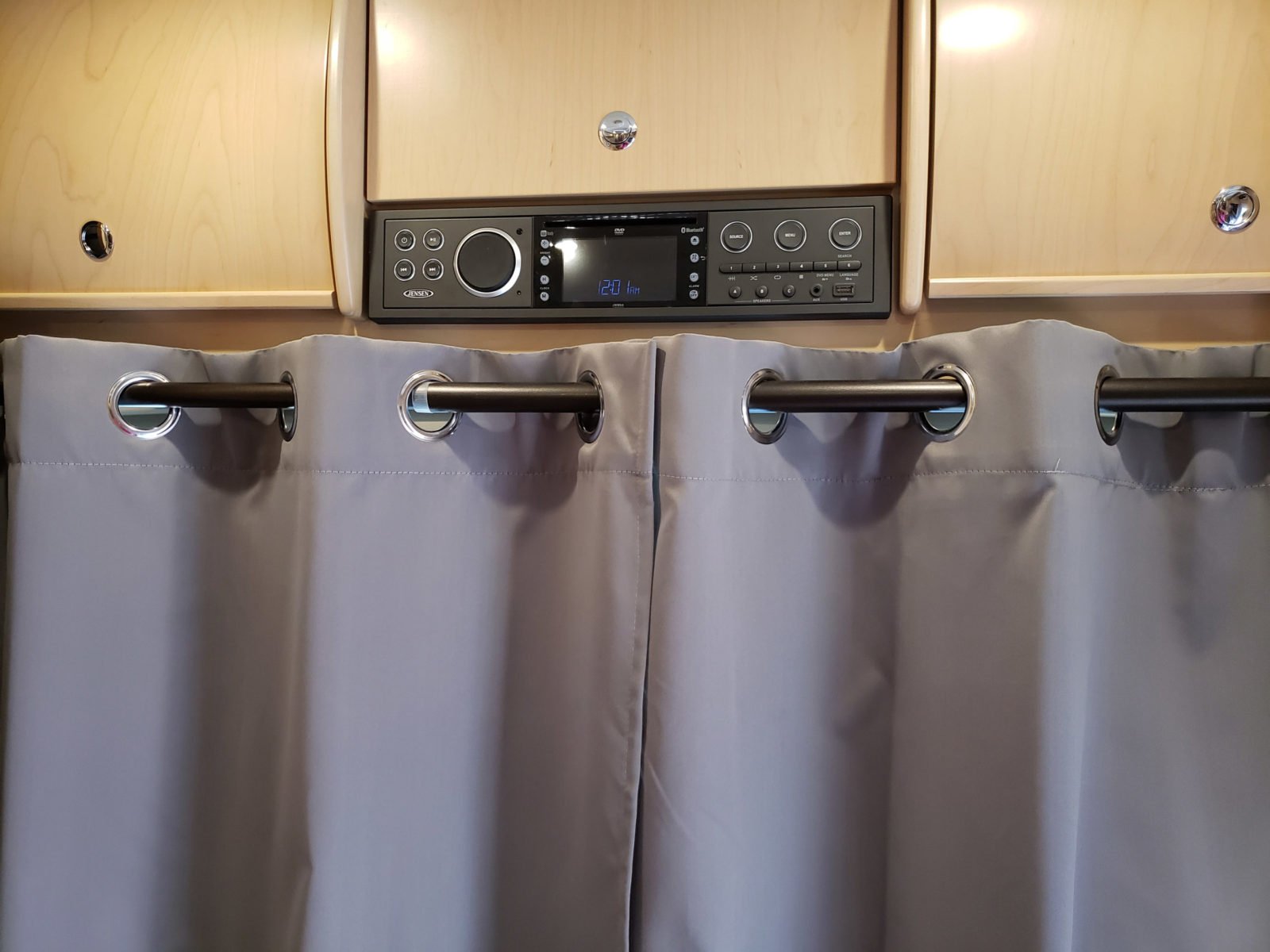
There are other areas where heat can infiltrate. For our unit, the skylight, the shower dome, and the two vent fans are portals for summer’s intense heat. When it’s sunny outside and you stand under any of these openings, you can feel the heat on the top of your head! An inexpensive foil-insulated panel cut to fit the skylight and the shower dome was an easy fix, while the fan openings each got an insulating block made for the purpose and purchased from Amazon. We had originally thought we would need velcro to secure each of these panels, but they fit the openings so snugly that we didn’t need any additional fasteners.
We discovered another heat transfer issue when we brought down the Murphy bed one evening. The bedding was hot to the touch from leaning against the window it covered when in the stowed position. An easy fix was to outfit the window with a foil-insulated panel similar to the one we used in the cab. Done and done!
Cooling Down the RV
That took care of heat transfer – now we had to address general comfort levels. The A/C unit works well in our RV and can bring the temperature down to a reasonable level. We keep the A/C fan on as well so that even when the A/C unit reaches temperature, the fan continues to move the air. To make it more efficient, we bought a couple of battery-operated fans.

These desk fans have a clip that allows them to hang from shelves, window valences, or tabletops. They oscillate to keep the air moving and that just makes the whole cabin feel cooler. Because they are clip-on, we can move them from area to area. We have small shelves behind our Murphy bed, and the fans neatly clip onto the shelves to keep us cooler while sleeping – just remember to take the fans down before putting up the Murphy bed! We also discovered a “cool” pillow made from a temperature-regulating foam that actually feels cool to the touch all the time. That really helps when sleeping without air conditioning!
Help Your RV Fridge
RV refrigerators are not known for “keeping their cool,” so we help ours out in a few ways. First, it’s all about airflow. We used to put food into small plastic bins to keep it from rolling around in the fridge, but they blocked the airflow. So, we traded out the plastic bins for metal-wire baskets. The metal stays cold and allows air to flow around the food.
We also considered substituting the plastic fridge shelves with coated wire shelves to help the airflow, but since the plastic shelves have vents and fit so perfectly we put that project on hold. Some fridges have little shelf clips that help keep food from falling out. You can use those along the back of the shelf to keep food from cramming against the back of the fridge and blocking the flow of air.
A big lesson for us was to refrain from overfilling the fridge. At home, a full fridge is great with lots of meal options, but in an RV, it’s just too much material to cool. We learned to stock the fridge with just what we needed for each week. That way, we made sure that there was space all the way around the perimeter of the fridge. We filled up the wire-baskets, put a few items on either side of them and that’s it. We shop more often, but everything stays cold – as a bonus, this encourages us to try local foods!
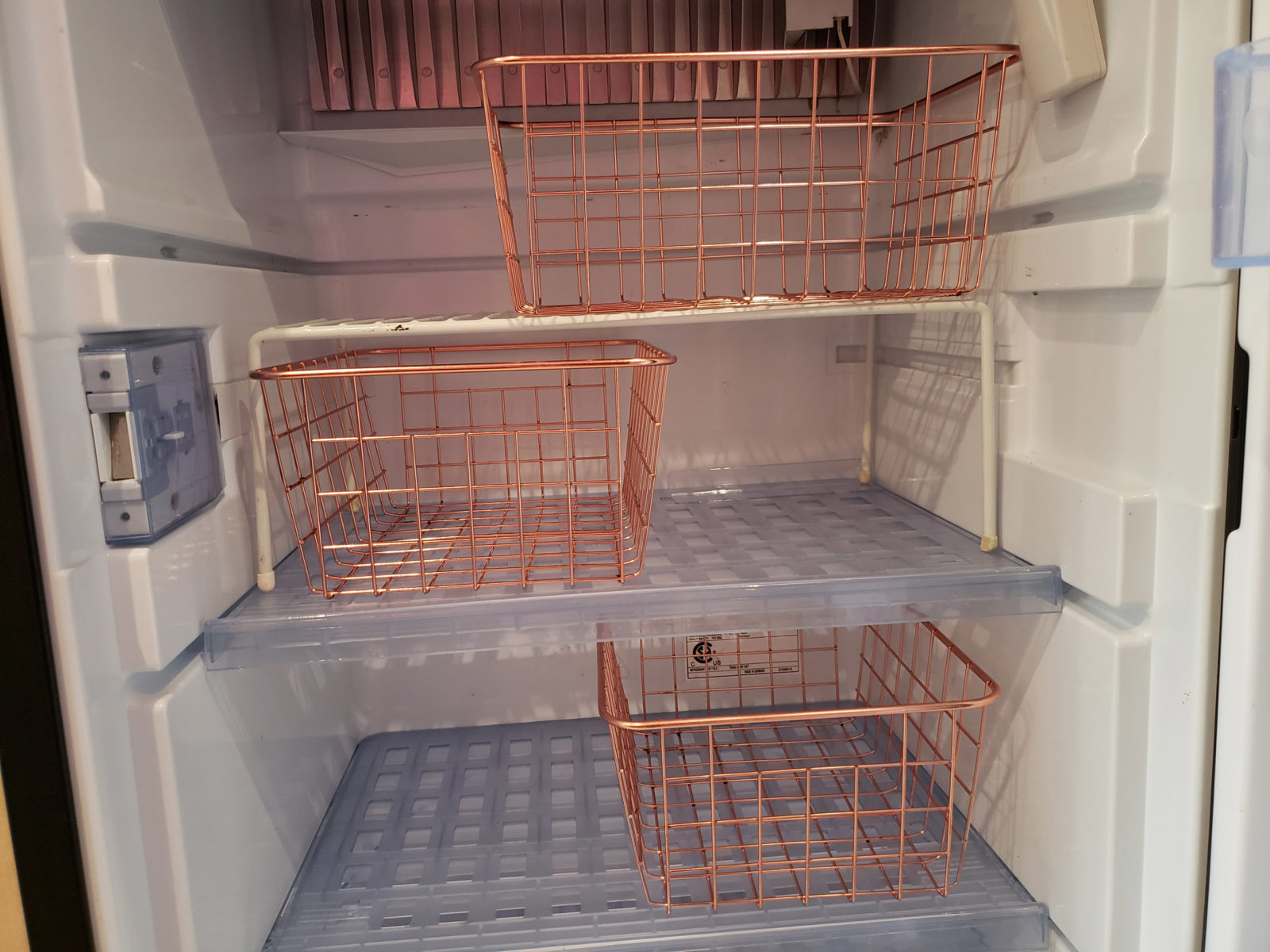
We’ve found that setting the fridge to its highest setting and getting it cooled down before loading it up with food worked best. Just a note of caution – it works much better if the food you put in the fridge is already cold. RV fridges keep food cold but they are not efficient at cooling down warm food. Once everything is loaded and the fridge temperature stabilized, we keep an eye on the temperature with a remote thermometer. A sensor goes in the fridge and another in the freezer, then the display unit sits on the counter.
If we see the fridge or freezer temperature climbing, we take action to determine if there is a problem. First, we make sure there is good airflow, since driving can make the food shift and block the flow of air. Second, we check the cooling “fins” for ice. If that happens, we simply step back the temperature setting and GENTLY scrape the ice from the fins. Defrosting would be better but in the middle of a trip that isn’t always realistic. We have also “helped” drop the temperature with a zip-top bag filled with ice. And that leads us to our next “keep cool” tip.
Take Along a Cooler
With an RV, we didn’t think we would need a cooler, and the big question in a small RV was where to put it! We found one that fits between the front seats, acting as a table – and it even has built-in cup holders. Inside the cooler we keep soft drinks, milk, bottled water, or whatever needs to be icy cold. That helps the fridge in that we don’t open it every time we want a soda. It is also a good strategy to use the cooler to “cool down” warm food items before putting them in the fridge.
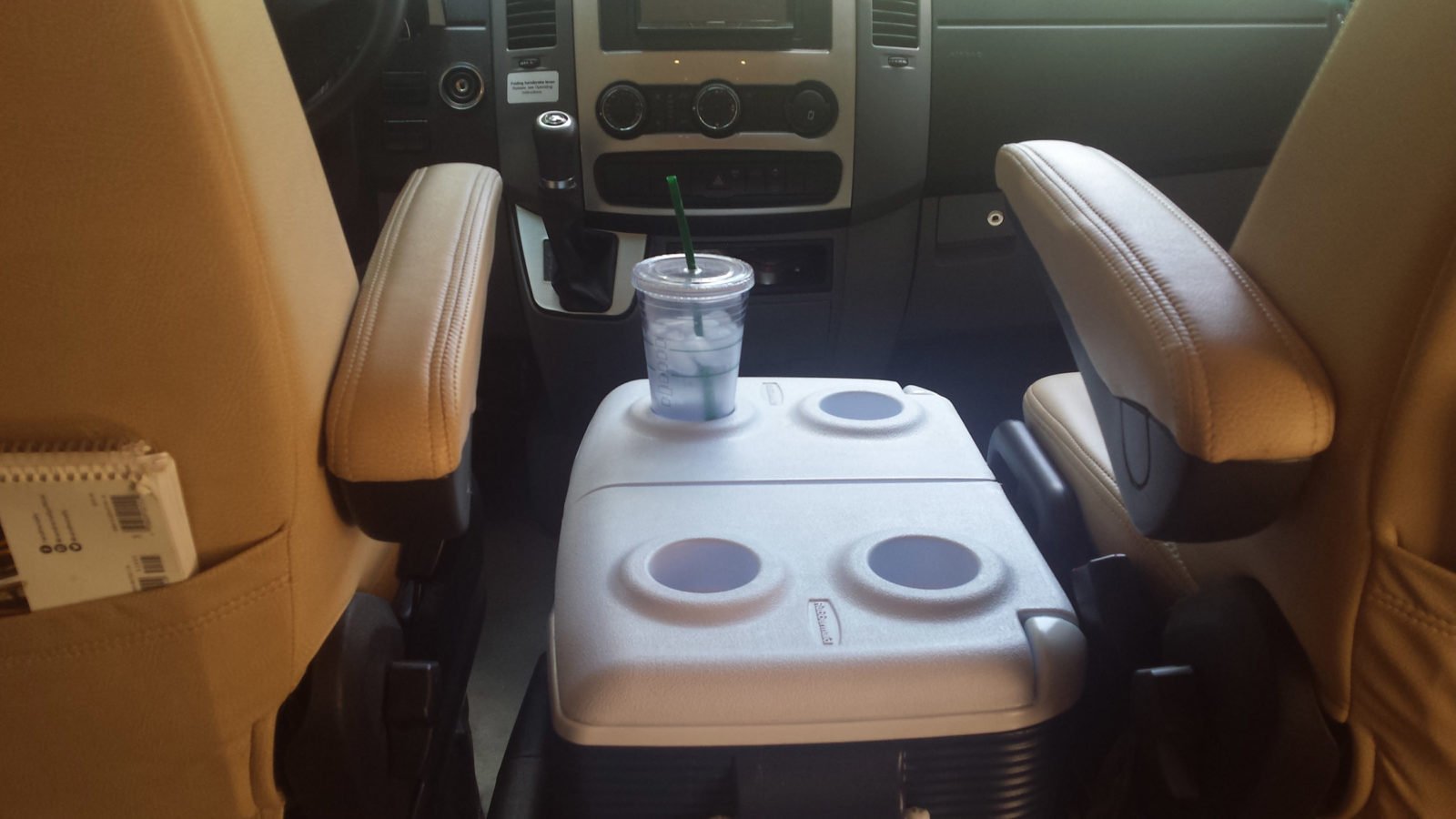
A cooler also offers you ice! Although our RV fridge has a great freezer, it’s tiny and ice trays would take up too much space. Instead, we buy ice for the cooler every few days and keep a small portion in a zip-top bag for drinks. The bag filled with ice still helps keep the drinks cool, and we have clean ice when we need it.
Boondocking Cool
You may wonder how all this works when boondocking. No A/C, right? Well, sort of. We use the generator to run the air conditioner to cool down the unit before bedtime, and after we shut it down, we use the battery-operated fans for the evening hours. They run for 8 to 10 hours on a charge and the oscillation makes it feel cooler than it really is.
A cool shower before bed helps, as does a glass of ice water before turning in. If we are in an area where we won’t disturb anyone, we might run the A/C for 15 minutes in the middle of the night to cool down the unit again. Or, if the area outside is not too noisy and if the night time temperatures are cooling down, we will open the skylight and windows for ventilation and position the fans at the windows to pull in cool night air. This works well in low humidity areas, but in high humidity, bringing in that damp air doesn’t always make you feel cooler!
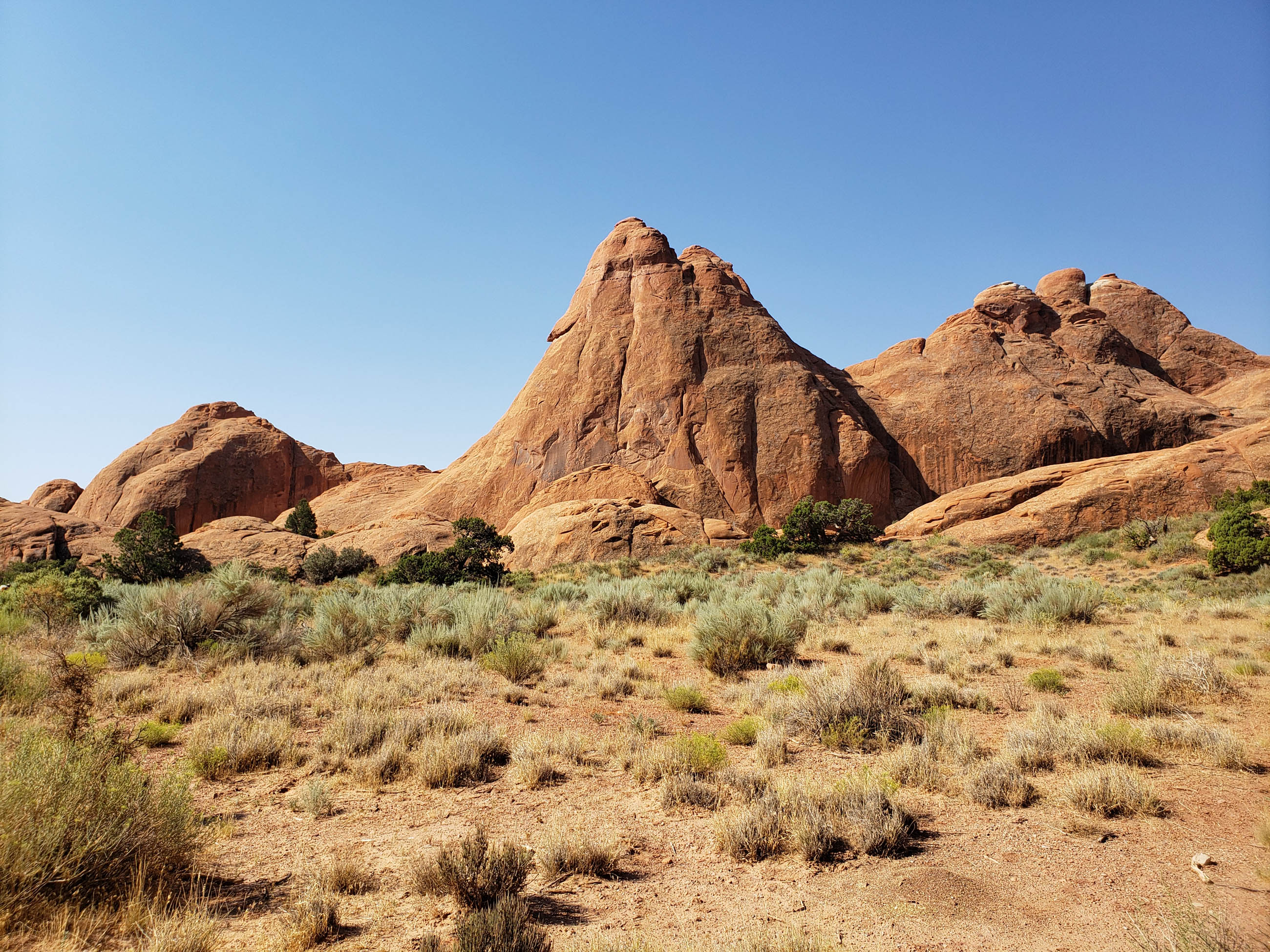
Dress Cool
I suppose it should go without saying to dress appropriately for warm weather. Lightweight natural fabrics breathe better than no-iron synthetics (I know there’s a trade-off there!), and light colors reflect sunlight better than dark colors. Jim found some “sun shirts” that protect against UV rays, are very lightweight, and shed wrinkles. Even with long sleeves, these shirts feel cool. Sleepwear that wicks moisture will feel cooler than cotton or poly blends.
Keep Your Cool
When the temperatures rise, sometimes frustrations do too. Keep your cool by enjoying outdoor activities in the early morning or at sunset when temperatures begin to drop. Leave the mid-day for air-conditioned grocery stores, malls, or movie theaters. Or, leave the mid-day heat for pool time and naps!
Traveling in summer can be a bit of a challenge with the heat and the crowds. But with just a little planning and preparation, you can embrace summer travel, enjoy the outdoors, and make “warm” memories to enjoy all winter long!


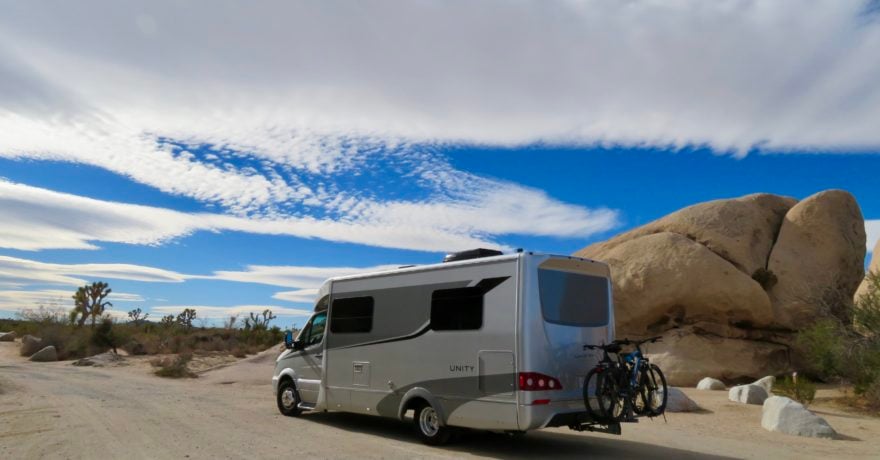
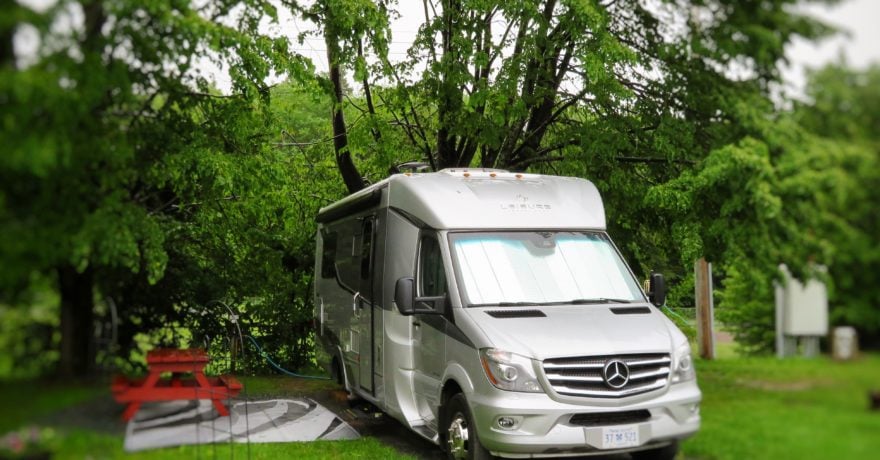
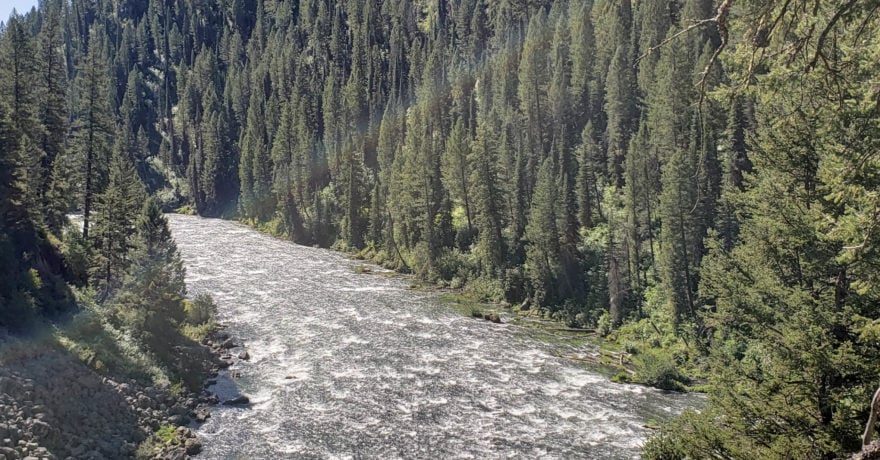
Comments